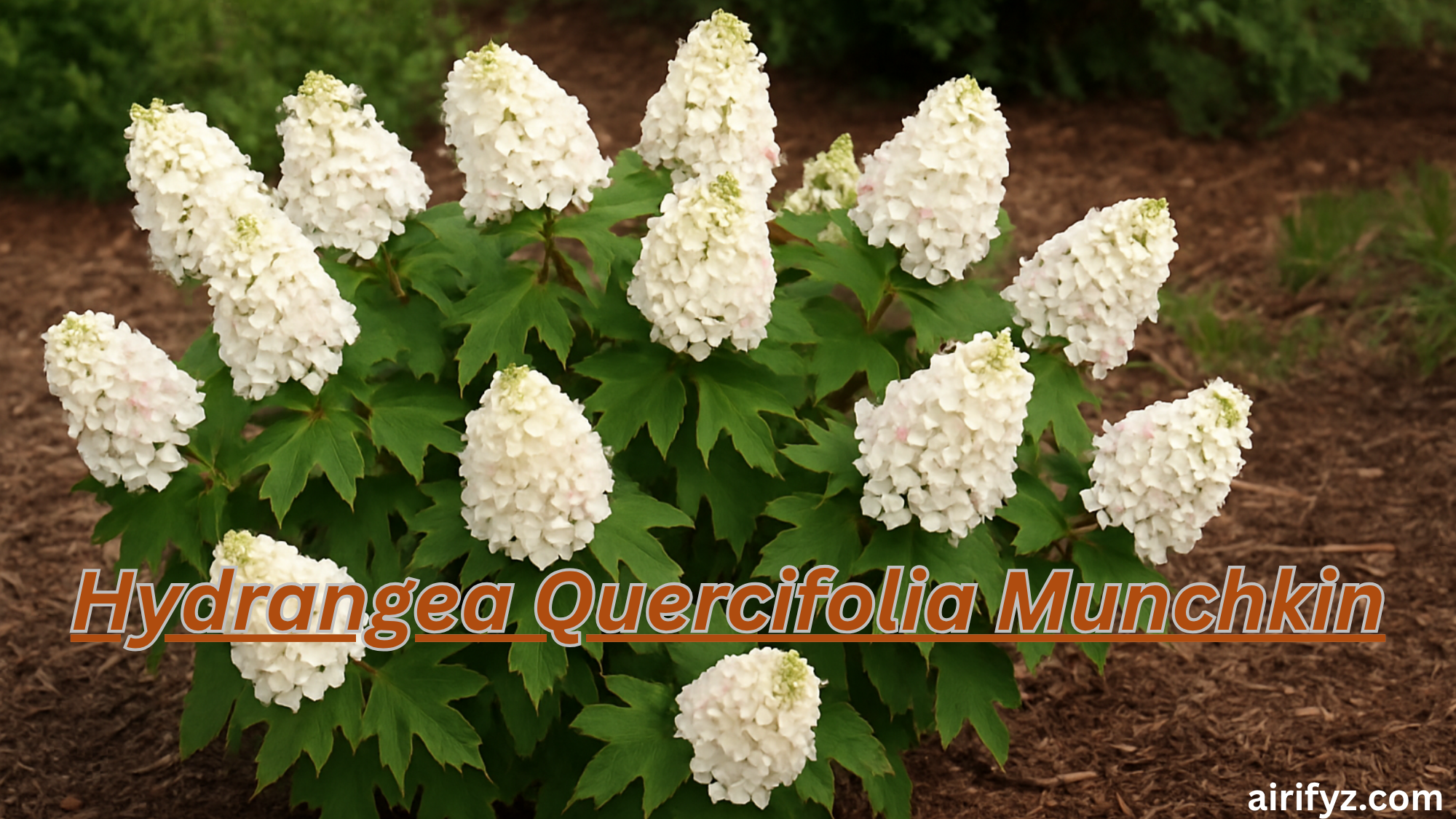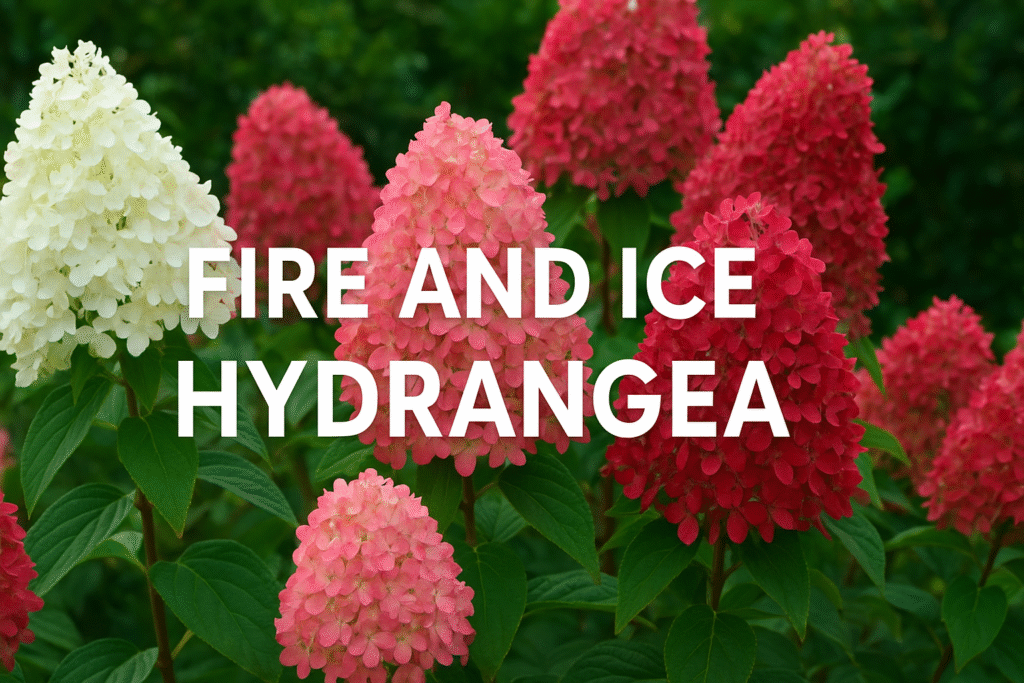INTRODUCTION:
Hydrangeas are beloved for their dramatic blooms and versatile garden appeal—but Hydrangea Quercifolia Munchkin takes that reputation to an entirely new level. Compact, resilient, and stunning year-round, this dwarf oakleaf hydrangea is quietly becoming a game-changer in modern landscaping—and surprisingly few gardeners know why.
In this in-depth guide, we’ll uncover the shocking secrets behind Hydrangea Quercifolia Munchkin, exploring what makes it so special, how to grow it like a pro, and why it’s fast becoming a favorite among landscape designers and home gardeners alike.
🌸 What Is Hydrangea Quercifolia Munchkin?
Hydrangea Quercifolia Munchkin is a dwarf cultivar of the oakleaf hydrangea, developed by the U.S. National Arboretum. It features all the charm of its larger cousins but in a more compact form—making it perfect for smaller gardens, borders, and containers.
Its lush white flowers age to soft pink, and its oakleaf-shaped foliage turns deep red and burgundy in fall, offering four-season interest that surprises even experienced gardeners.
“It’s the perfect small-space hydrangea—low-maintenance, bold in color, and rich in texture,” says landscape designer Maria Ashford.
🧪 Why Munchkin Is a Game-Changer: The Real Secrets
1. Bred for Brilliance, Not Just Beauty
Developed as part of a national breeding program, Munchkin was specifically designed for:
-
Compact growth (3 feet tall, 4–5 feet wide)
-
Heavy blooming
-
Strong stems that resist flopping
-
Outstanding fall color
Unlike many dwarf hydrangeas that sacrifice bloom volume, Munchkin is prolific, producing cone-shaped panicles up to 6 inches long—even in partial shade.
🌱 Secret #1: It blooms reliably on old wood, which means less guesswork during pruning.
2. Surprisingly Drought Tolerant
Most hydrangeas need lots of water, but once it’s settled in, Hydrangea Quercifolia Munchkin can handle dry weather better than others.
Its deep root system and tough, leathery leaves make it ideal for climates where water conservation is key.
💧 Secret #2: This hydrangea thrives in well-drained soil and doesn’t need babying.
3. A Master of Color Shifts
Munchkin’s flower show doesn’t end with summer. The pure white blooms turn to blush pink as they age, and the bold, lobed foliage lights up in fiery autumn shades of red, orange, and purple.
🍁 Secret #3: The fall display often outshines its summer blooms—making it a two-for-one plant in terms of color impact.
4. Compact Without Being Cramped
Many dwarf shrubs appear stunted or sparse—but Munchkin maintains a dense, symmetrical shape without pruning. It’s ideal for:
-
Foundation beds
-
Woodland gardens
-
Urban courtyards
-
Container gardening
🌿 Secret #4: It creates a full-bodied look even in its first few seasons, giving instant landscape value.
5. Low Maintenance, High Reward
Forget spraying or deadheading—Hydrangea Quercifolia Munchkin resists pests, disease, and deer. It doesn’t demand specialized fertilizers or pruning techniques either.
🛠️ Secret #5: Just give it compost-rich soil, light shade, and an annual mulch layer—and it will thrive for decades.
🌱 How to Grow Hydrangea Quercifolia Munchkin Like a Pro
📍 Ideal Growing Conditions:
-
Light: Full sun to part shade (prefers afternoon shade in hot climates)
-
Soil: Moist, well-draining, slightly acidic to neutral
-
USDA Zones: 5–9
-
Spacing: 3–4 feet apart
✂️ Pruning Tips:
-
Prune right after flowering (late summer) to avoid cutting next year’s blooms
-
Remove only dead or crossing branches
🌾 Fertilizer:
-
Use organic compost or a balanced slow-release fertilizer in early spring
-
Avoid high-nitrogen formulas to prevent excessive leaf growth
🌿 Mulching:
Apply 2–3 inches of organic mulch to retain moisture and regulate soil temperature.
🧠 Real-Life Example: Transforming a Tiny Backyard
When Susan, a city gardener from Austin, replaced her old leggy shrubs with three Hydrangea Quercifolia Munchkin plants, she was skeptical. “I didn’t expect much from something labeled ‘dwarf,’” she says.
But by the second summer, the plants were loaded with blooms, stayed neatly within bounds, and turned a brilliant ruby red by October.
“It gave my patio year-round personality with almost no work. I’ve since added two more.”
🧭 Expert Tip: Plant It Where You Can See It
Landscape architect Mark Winston advises placing Munchkin near patios, entryways, or windows where its year-round texture and evolving color story can be enjoyed up close.
🔁 Addressing Counterpoints
Some gardeners worry that dwarf varieties are less impactful than standard hydrangeas. However, Munchkin’s full-bodied shape and dense blooms defy that logic. It’s also ideal for areas where standard oakleaf hydrangeas would simply outgrow the space.
Another concern? That it may lack resilience. Yet Munchkin has been trialed in both humid Southeast and dry Midwestern climates—proving its adaptability across regions.
🔮 Future Trends: Why Munchkin’s Popularity Is Surging
As homeowners seek:
-
Low-maintenance landscapes
-
Climate-resilient plants
-
Smaller-scale shrubs for urban lots
…the Hydrangea Quercifolia Munchkin stands out as the perfect answer. Its mix of performance, personality, and practicality makes it a reliable centerpiece in modern gardening.
Expect to see it featured more in:
-
Container garden designs
-
Pollinator-friendly native gardens
-
Wildlife hedgerows and mixed borders
🏁 Final Thoughts
Whether you’re a first-time gardener or a seasoned landscaper, Hydrangea Quercifolia Munchkin offers more than just beauty. It delivers seasonal color, structure, and resilience, all in a neat little package. Its secrets may be shocking—but now that you know them, it’s time to plant one and see the magic for yourself.
💬 “It’s the kind of plant you grow once—and then recommend to everyone.”
You can also read about: 🌻 Sunflower and Hydrangea Who Is the Best? Shocking Answer
🙋♀️ FAQs About Hydrangea Quercifolia Munchkin
1. How big does Hydrangea Quercifolia Munchkin get?
It grows about 3 feet tall and 4–5 feet wide, making it perfect for compact spaces.
2. When should I prune Hydrangea Quercifolia Munchkin?
Prune after it blooms in late summer, as it flowers on old wood.
3. Is Munchkin deer resistant?
Yes, oakleaf hydrangeas—including Munchkin—are generally unappealing to deer.
4. Can I grow Munchkin in full sun?
Yes, but it prefers some afternoon shade in hot regions to prevent leaf scorch.
5. What makes Hydrangea Quercifolia Munchkin special?
Its compact form, reliable blooms, brilliant fall color, and low maintenance needs set it apart.



